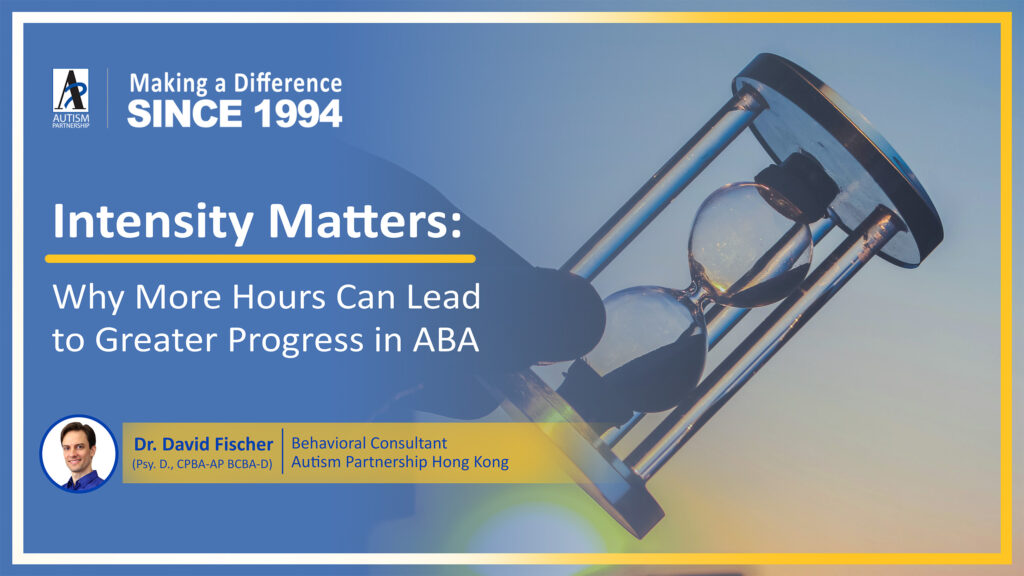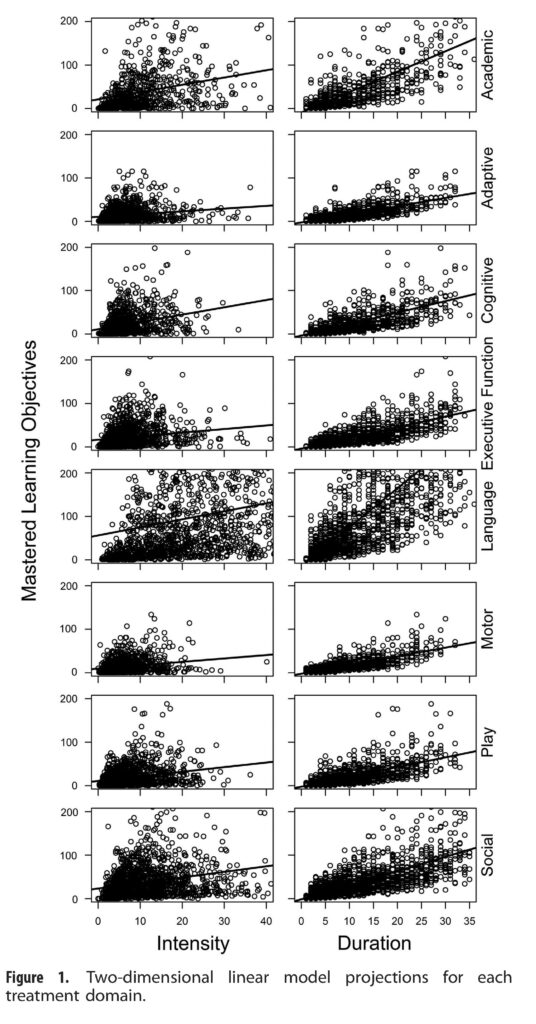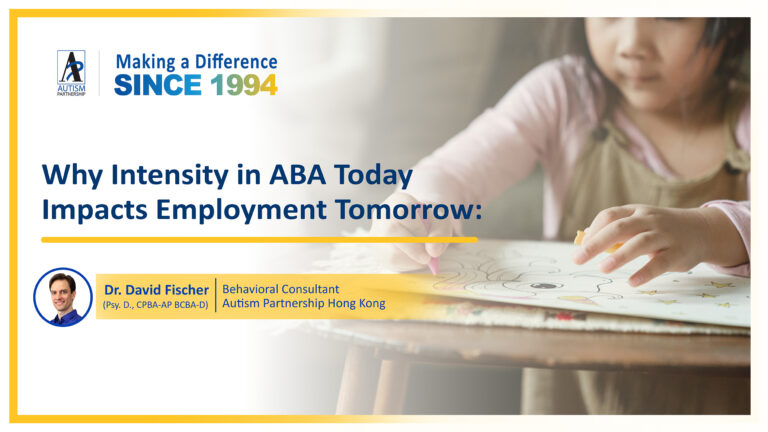
When considering ABA therapy for a child with autism, parents often ask: “How many hours should my child receive?”
It’s an important question, and the answer can make a substantial difference. While every child is unique, decades of research has shown the intensity of therapy matters.
A major study published in 2017 by Linstead and colleagues examined this exact question. Their findings offer important guidance for families who want to make the most of their child’s ABA program.
The study evaluated the relationship between treatment intensity and developmental gains in children with Autism Spectrum Disorder.
Participants ranged in age from 18 months to 12 years old and received different levels of ABA treatment across a range of core skill areas, including Language, Cognitive ability, Social functioning, Adaptive behavior, Executive functioning, Academic performance, Motor skills, and Play
The researchers wanted to know whether the number of therapy hours actually impact how much a child improves.
The answer was a clear yes.
Children who received higher-intensity ABA therapy made greater gains across all eight developmental areas. This was true not only for very young learners, but also for older children up to 12 years old.
The data showed that receiving a little ABA was not enough. Children who received lower-intensity treatment made significantly less progress, even if they remained in therapy for a similar duration overall.
In other words, more hours of quality therapy led to more meaningful results.

Like mastering any complex skill, whether it is learning a language, developing athletic ability, or building social confidence, repetition and consistency are key.
Children with autism often need more practice, more feedback, and more support to acquire and retain new skills. That’s why intensive intervention, typically defined as 20 to 40 hours per week, is often recommended, especially in the early stages of treatment.
While some families may be drawn to lower-hour programs for convenience or cost, this study reminds us that limited hours means limited gains.
If you’re considering ABA therapy, there are important questions to ask. How many hours per week will my child receive? Will the hours be consistent and well-structured? Will the therapy be individualized and focused on meaningful goals?
Also, be cautious of providers who quickly agree to a minimal number of hours without conducting a thorough assessment. That could be a sign they are compromising treatment standards, which will affect your child’s progress.
At Autism Partnership, we understand that time matters, especially in the early years. That’s why we recommend intensive, high-quality ABA delivered by well-trained professionals who adapt treatment based on your child’s unique profile and potential.
ABA is a powerful tool, but only when delivered with the right level of intensity and quality. The research by Linstead and colleagues offers clear guidance:
More therapy, when done well, leads to greater outcomes across critical areas of development.
If your child is struggling to make progress or you are unsure about what level of therapy is appropriate, do not hesitate to speak with our team. We are here to help you make the most informed and impactful decision for your child.
Linstead, E., Dixon, D., Hong, E., Burns, C., French, R., Novack, M. N., & Pritz, H. (2017). An Evaluation of the Effects of Intensity and Duration on Outcomes Across Treatment Domains for Children with Autism Spectrum Disorder. Asian Journal of Psychiatry, 25, 160–167.
Dr. David Fischer received a doctoral degree in Clinical Psychology from Rutgers University, USA, advised by Dr. Sandra Harris. Since 1999, he was worked in the field of Applied Behavior Analysis and with individuals diagnosed with a developmental disability. He completed his pre-doctoral internship and post-doctoral fellowship at the Marcus Institute in Atlanta, Georgia working in the severe behavior unit, short-term-out-patient clinic, feeding disorders unit, and early intervention clinic. From 2007 – 2011, he trained public school teachers to instruct and manage the behavior of their students diagnosed with Autism spectrum disorder. He also was the clinical coordinator of the Asperger’s College Program, which provides support services to Rutgers students diagnosed with Asperger’s Disorder.

When most parents start ABA therapy for their child, they are thinking about immediate concerns: communication, behavior, independence, or school readiness. However, there is another important factor to consider and that is your child’s future as an adult. A recent UK government report, The Buckland Review of Autism Employment (2024), sheds light on a troubling reality. […]

When considering ABA therapy, the first questions are often about hours, goals, or cost. There is another overlooked factor that may be even more important: Who is delivering the therapy? An exemplary case study published in 2020 by Ferguson and colleagues at Autism Partnership Foundation showed just how much of a difference the quality and […]

If you’ve ever wondered whether how ABA is delivered really makes a difference, new research has provided a clear answer: Yes, it absolutely does. In 2022, a team of researchers, led by Dr. Christine Milne, in collaboration with Dr. Ronald Leaf, Dr. Justin Leaf, Dr. John McEachin, and others, published a study that directly compared […]
Please share to let more people learn about ASD and ABA therapy:


All information received will always remain confidential. We will contact you as soon as we review your message. Thanks